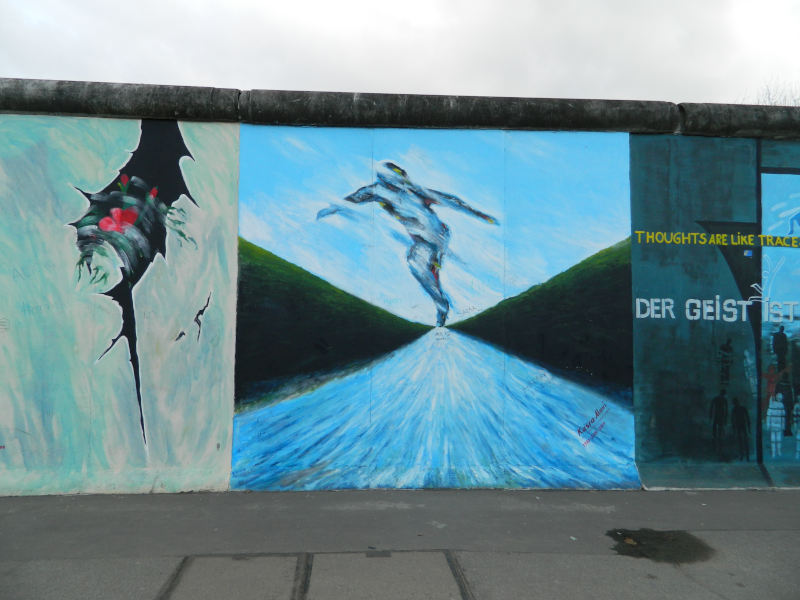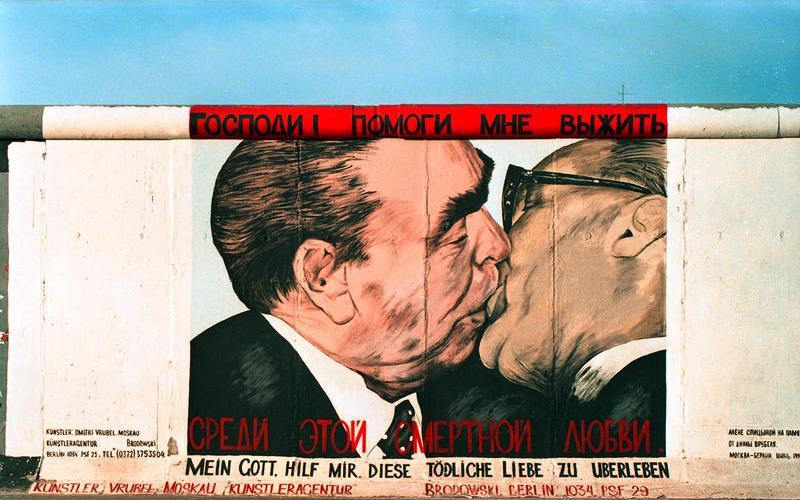Walking Alongside the East Side Gallery, the Longest Surviving Section of the Berlin Wall
A monumental event in the world's social and political history, the fall of the Berlin Wall is equally significant for the history of visual arts. The downfall of European communism signalled not just the end of the Cold War divisions in the world but also led to the opening of Eastern Bloc countries to the Western art world. These changes allowed for the East Side Gallery, one of the most important open-air galleries in the world, to be created.
Walking around Berlin inevitably leads to this place of art and history. In 1989, the grey wall that was dividing East and West Germany was finally demolished. However, sections were left standing in site, and its longest surviving stretch forms the East Side Gallery today. Located along the Spree river and Mühlenstrasse, the gallery is nearly a mile (1.3 km) long, and is decorated with more than 100 wall paintings or murals.
The gallery was founded after the successful merger of two artists' associations in Germany, the VBK and BBK, with founding members including the Federal Association of Artists BBK Bodo Sperling, Jörg Kubitzki, Barbara Greul Aschanta, and David Monti.
"The East Side Gallery is understood as a monument to the fall of the Berlin Wall and the peaceful negotiation of borders and conventions between societies and people," read the statement from the artists involved in the gallery project.
History and Artworks of the Berlin Wall
In the aftermath of the Berlin Wall destruction, 118 artists from 21 countries were invited to Berlin to paint murals on its remnants, which comprises the East Side Gallery today. The gallery was officially opened in 1990 on September 28th, and was awarded the protected memorial status the following year.
Currently counting 101 large format murals, the East Side Gallery preserves the expressions of joy and celebratory mood after the Berlin Wall and the Iron Curtain in Europe fell. The images are filled with hope for a better and more humane society that would follow a period of divisions, lack of freedom, spying, and persecution.
The border fortification between East and West Germany was completed on August 13th, 1961. The location between Friedrichshain and Kreuzberg, divided by the River Spree, was used as the border strip, with the entire width of the river belonging to East Berlin. Contrary to popular belief, there was not one single wall built, but multiple walls and obstacles were constructed. The East Side Gallery is located on a section of the former Hinterlandmauer, the inner wall that faced East Berlin.
The gallery is a monument to a concrete event, but it also holds a universal value as it testifies to human resilience, fight for freedom, and unwavering spirit. It is filled with images of personal hopes and dreams that have global resonance and is, to this day, the only official monument celebrating the 1989 reunification.

The East Side Gallery Artworks
Some paintings on the Wall were covered with graffiti tagging in the past, but efforts have been made to restore the Wall to its previous glory. Among numerous works, over the years some crystalized as the leading images linked with the gallery.
The artists painting the Wall commented on the political changes of 1989/1990 in their works, with some of the murals gaining worldwide popularity over the years, such as Dmitri Vrubel's Fraternal Kiss (My Lord, Help Me to Survive This Deadly Love, 1990), showing a kiss between Soviet leader Leonid Brezhnev and East German leader Erich Honecker. Another one is Brigit Kinders's depiction of Trabant, a popular East German car, braking through the Wall. Shown on postcards and other Berlin memorabilia, these works join many others in the open-air gallery visited by millions each year.
Besides the mentioned Vrubel's and Kinders's works, other images contain surreal motifs and political statements, mixed with graffiti-like effusions, testifying to the culturally rich atmosphere of Berlin.
German artist Thomas Klingenstein painted Detour to the Japanese Sector, a vivid depiction of the Japanese landscape, a region that East Germans were prohibited from visiting during the divide. Other murals of the gallery transferred the optimism of the moment through slogans that read No more wars, no more walls, a united world. Among the artists working on the Wall were Jürgen Grosse (INDIANO), Bodo Sperling, Kasra Alavi, Siegfrid Santoni, Kani Alavi, Jim Avignon, Thierry Noir, Ingeborg Blumenthal, Ignasi Blanch i Gisbert, Kim Prisu, Hervé Morlay VR and many others.

Recent Events
Completely exposed to the weather, the East Side Gallery is periodically restored. In 1996, Kani Alavi and Jörg Weber established East Side Gallery e. V. as an artists' initiative to preserve and restore its works. In 2000, some 300-meter stretch of the Wall was restored, and around 33 murals were repainted, with additional restorations taking place in 2009. After repairs, eight artists refused to repaint their murals and organized to defend copyrights to their work.
Located in an attractive part of Berlin, the site drew investors, and in 2013 a segment of the Wall was scheduled to be destroyed to make space for deluxe apartments. Following protests from Berliners and David Hasselhoff, the murals from the segment were moved across the street.
In 2015, a fence was built to preserve the Wall from acts of vandalism and graffiti tagging. In 2018, the State of Berlin transferred the East Side Gallery to the Stiftung Berliner Mauer (SBM), which is now responsible for its preservation.
The East Side Gallery in Berlin is open around the clock and offers overview tours for visitors, covering various topics, including history and artworks, lasting around one hour. Family tours are also organized.
For additional information, visit the East Side Gallery's official webpage.
Featured image: East Side Gallery, city of Berlin, via Creative Commons
Can We Help?
Have a question or a technical issue? Want to learn more about our services to art dealers? Let us know and you'll hear from us within the next 24 hours.
